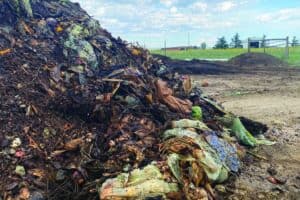Two bills signed by Gov. Bill Ritter aim to increase the amount of electricity produced from renewable energy resources in Colorado.House Bill 1281 doubles the amount of electricity that must come from renewable energy sources when the electricity is provided by an investor-owned utility, such as Xcel Energy. Under Amendment 37, passed by voters in 2004, investor-owned utilities were required to obtain 10 percent of their electricity from renewable energy resources by 2015. HB 1281 increases that percentage to 20 percent by 2020.HB 1281 eliminates the exemption granted by Amendment 37 to cooperative electric associations such as Mountain View Electric Association that serve less than 40,000 customers.The bill requires cooperative electric associations to obtain 1 percent of their retail electricity sales from renewable energy resources beginning in 2008 through 2010, 3 percent in 2011 through 2014, 6 percent in 2015 through 2019 and 10 percent in 2020 and after.Darryl Edwards, manager of the MVEA member services department, said he is pleased with the bill. ìThrough our Green Power program, MVEA already obtains about .8 percent of its electricity from renewable energy,î Edwards said.SB 100, also signed by Ritter, authorizes the creation of ìenergy resource zonesî and allows investor-owned utilities to recover the cost of building transmission lines in the zones during construction, instead of waiting until construction is completed.According to a news release from Ritterís office, SB 100 ìallows us to break the ëchicken and the eggí cycle whereby wind companies donít build turbines until there is adequate transmission capacity, and utilities donít build transmission capacity until there are turbines.îNew transmission lines are necessary for the development of wind farms on the eastern plains. The wind farms, in turn, are expected to improve the incomes of people living there.The Colorado Green Project near Lamar is an example. According to ìWind Energy in Colorado,î a guide prepared by the Colorado State University Cooperative Extension, the project consists of 108 1.5 megawatt windmills ñ the largest ever assembled in the United States ñ that generate 162 megawatts of electricity every year. The windmills began operating in 2003 and produce enough electricity to power 52,000 average American homes.Ninety-eight of the windmills are located on a cattle ranch owned by Bob and Helen Emick, who receive lease and royalty payments from the owners of the windmills, Shell WindEnergy Inc. and PPM Energy. Helen Emick said the cows like the shade the windmills provide.The Union of Concerned Scientistsí Web site states that ìroyalties are typically around $2,000 to $5,000 per year for each turbine, depending on its size.îAccording to ìWind Energy in Colorado,î the Colorado Green Project created almost 600 construction jobs and now provides 14 permanent, full-time operation and maintenance jobs.Environment Colorado, an advocacy group headquartered in Denver, estimates that HB 1281 will increase the total wages paid to workers in Colorado by $570 million through 2020 and will increase Coloradoís share of the GDP (gross domestic product) by $1.9 billion through 2020. The group also states that Coloradoís wind power potential is estimated at 600,000 gigawatt hours per year, or 12 times more electricity than the state consumed in 2005.HB 1281 will generate ì$400 million in property tax revenue through 2020 to fund education and other services, particularly in rural Colorado,î according to Ritterís news release.HB 1281 was sponsored by Rep. Jack Pommer (D-Boulder), Rep. Rob Witwer (R-Golden) and Sen. Gail Schwartz (D-Snowmass Village). SB 100 was sponsored by Sen. Joan Fitz-Gerald (D-Coal Creek Canyon) and Rep. Buffie McFadyen (D-Pueblo West).Representatives Marsha Looper and Amy Stephens voted ìyesî on both bills, while Rep. Bill Cadman voted ìnoî on both bills. Sen. Ron May, District 10, which includes the Falcon area, voted ìnoî on HB 1281 and ìyesî on SB 100.For more information on the potential for wind energy in Colorado, see www.awstruewind.com, www.coopext.colostate.edu/WR/windbooklet.pdf, www.environmentcolorado.org/reports/EnergyEconomy.pdf, and www.ucsusa.org.






